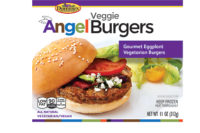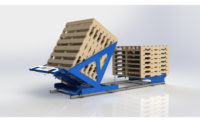Packaging design directly shapes how consumers perceive a brand, and sometimes even influences their willingness to buy. Visually interesting graphics always attract the consumer’s eye, and well-done graphics can make meaningful emotional connections that build brand loyalty. But, not even the most beautiful packaging aesthetic can conceal a product’s design if is hard to use, ambiguous and doesn’t contribute to the user experience. Successful refrigerated and frozen food package designs add another layer of challenges for designers—package design that thrives in the cold/frozen case.
What’s wrong with packaging today?
Most packages today are not designed with hands in mind. They’re designed for high-speed manufacturing and low costs. It is not surprising there is little excitement in current refrigerated and frozen food packaging designs. For example, the 1-pound package of bacon requires exceptional knife and scissors skills to open. And, because it’s bacon, the assumption must be that the consumer will eat the entire pound because there are no means of easily resealing the package.
There are also far too many clamshell designs with invisible razor-sharp pull tabs, hard-to-read labels and bulky packages to recycle or dispose of. It’s more common than not that tearing along a perforated seal to open a pouch never goes as intended. Instead, consumers resort to tearing open both ends. Then resealing this package is equally challenging because it lacks definitive tactile feedback to help the consumer align the zipper tracks or use the sliding fingertip pinch motion to reseal.
All hands are not equal
Designing intuitive packaging requires that you first consider the size, strength and dexterity of people’s hands and how these vary with age, gender and race. For both cold and frozen packages, best practices dictate accommodation for hands from fifth percentile female to 95th percentile male. It’s surprising how many package designs do not consider the impact fingernails have on dexterity and handling. Longer fingernails force a lower approach angle of the finger trying to get the fingertip pad on the target, which in turn, reduces fingertip strength. Differences in body size, shape and capability are fundamental human factors to consider in any design.
Most packages require consumers to use their thumb-index finger to pinch, pull, twist or hold. This thumb-index finger grip provides the highest level of dexterity. Knowing the strength needed to open the package allows the designer to reverse engineer the number of fingers needed to open the package, given the user’s known strength. This direction of thinking allows designers to create packages that will fall within a comfortable range of strength and dexterity capabilities of the targeted consumers.
Aging hands require special attention in package design. Designing for consumers who are more than 50 years old requires consideration of how the body ages and how the hands and eyes change throughout life. Everyone loses hand strength and joint flexibility when aging. Commonly, women who are 65 and older possess roughly 20% of the hand strength they had when younger. This affects their ability and strength to grasp, pinch and pull on tabs and closures. Complicating matters is that this aging cohort commonly experiences arthritis or diabetes, which comes with its own neuropathies and dexterity issues. And, with age comes aging eyes, where glare and contrast wreak havoc with the ability to read labels that have type too small and are printed on glossy paper, which reflects overhead lighting.
These hand and human factors play a direct role in designing easy-to-use, intuitive packaging that raises the standard for user experience. But, there are several unique factors to consider in the design of refrigerated and frozen food packaging.
Refrigerated vs. frozen
Designing packaging for frozen foods is different from designing for refrigerated products. Frozen food packaging is hard, cold and slick, and in most cases, wrapped with slippery labels. With these design constraints, it is challenging to find ways to add surface features, textures and novel package shapes that improve grip security without driving up cost too much.
In contrast to rigid frozen packs, refrigerated packaging is squeezable, which dramatically improves grasping by allowing the user’s fingertips to wrap around the package with a strong power grip. Regardless of package type, refrigerated or frozen, hand and finger span is the defining factor that dictates strength, dexterity and usability.
Single-serve vs. bulk
Size matters, regardless of single-serve or bulk formats. Designing single-serve packaging is more intimate and direct. These packages are typically smaller, lighter and commonly packed in cartons with high rates of disposability. As a result, design efforts focus more on precision fingertip dexterity, typically a bilateral or trilateral precision grip. Equally important in single-serve packages are visual cues that guide user behavior to perform in the way the easiest and most efficient way to use your product.
Because of bulk package size and weight, this design must focus more on providing package shapes and non-slip textures that work with power grips for handling, transporting and dispensing. Bulk packaging should be designed for one-handed use, not exceeding the grasping strength and capability of the dominant hand. Depending upon the use scenario, dispensing is common in bulk packaging, and as a result, designs must also consider grip zones for the non-dominant hand to counteract weight and balance during dispensing. The sizes of these large power grip zones will be dictated by 95th percentile hand size, knowing that larger and smaller hands will be easily accommodated.
Drinking vs. squeezing
For refrigerated beverages, the most important thing to focus on in package design is what touches the consumer’s lips – the kiss factor. How well the package fits and feels on the lips and how easy it is to consume the beverage at the user’s preferred rate of consumption play significant roles in defining the quality of a product and the attraction to continue use. For the most part, flip tops, pull caps and pop tops fail to consider mouth anatomy.
Ergonomic design begins with the size and shape of the lips and mouth and cadence of consumption – volume per gulp, number of gulps per second and total consumption provide key design constraints for closure designs.
Thawing products presents similar design requirements with one additional interesting challenge—multiple forms. These types of packages begin their life relatively firm, progressively changing into flexible packages. This product state transition makes it easy and common to accidentally drop the product. Good design must consider the life-cycle of these transitional packages, remembering they all start out as beautiful packages that quickly morph into rolled-up tubes, wrinkled pouches or crunched bottles. These multiple forms do little to promote the brand or maintain ergonomic comfort and usability.
The temperature of the package can also impact grasping and handling. Colder, frozen products cause users to grasp with their fingertips to minimize the cold sensation in their hands, but this comes at the cost of grip security. Once out of the refrigerator or freezer, these types of food and beverage package designs sweat and commonly have a thin film of moisture, making it extremely difficult to get a good secure fingertip grip. When designing these types of packages, it is important to pay close attention to these fingertip grip zones, and wherever possible, provide texture or changes in the package’s surface topology that allows good traction for the fingertips.
Handling stage and shipping
Packaging designers must also consider supply chain implications in design. How the product is shipped, how it packs out (“cubes out”) in containers and trucks and the structural integrity of the package itself dictates the number of pallets in the distribution center. These design constraints have a significant impact on product cost, and need to be understood and calibrated at the beginning of all packaging projects.
A rapidly emerging market for direct-to-consumer e-retailing of fresh and frozen foods, like the meal kit delivery service companies, presents new standards for primary and secondary packaging. Both need to withstand higher wear and tear within the packaging experience, especially when traveling through the courier delivery channel. In addition to more stringent structural design requirements, retailers are instituting their own packaging design standards that mandate frustration-free requirements and socially responsible designs. This trend will set a new standard for e-commerce packaging across all industries.
Dignity of design
Through research, ergonomic industrial designers know that as people age and struggle with packaging designs, they are reluctant to ask for help. Instead, they resort to hacks that include the use of pens, ice picks, screwdrivers, corkscrews, scissors and carving knives to pry open packages of all types, exposing themselves to routine pokes and injuries. Bad design erodes a person’s dignity. Designing with dignity grows out of a user-centered strategy that places the individual at the core of design.
Energizing successful packaging
When in doubt, always start with the package and product users and see them from an ergonomic perspective. Every detail -- functional, acoustic, visual and otherwise -- is combined to inform every stage of package design. That focus will result in a package that is intuitive, easy to use and a key contributor to a positive consumer experience.



